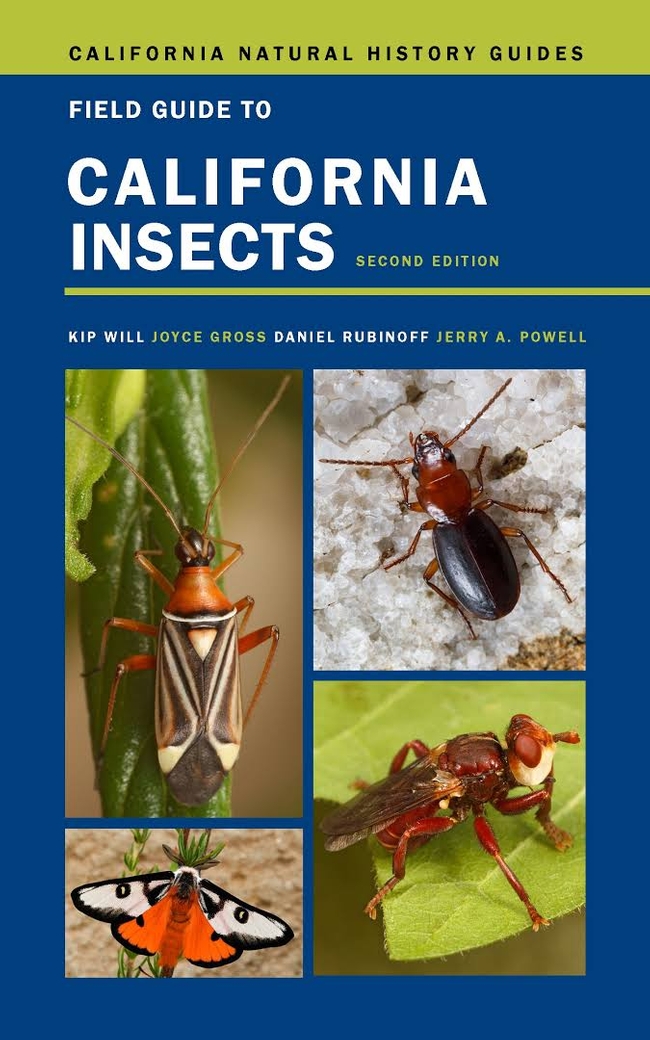
Step into your garden, walk over to a community park, or hike in the wilderness and see what's out there.
And take along the newly published, newly revised "The Field Guide to California Insects."
It includes more than 600 insect species. Not sure what species of butterfly that is? Want to know if that's a Valley carpenter bee? What's that species of praying mantis you just found? Take a look at the text and photos. Chances are you'll find them in this handy book.
It's a California Natural History Guide and published by the University of California Press. If you're into entomology, you'll probably recognize the names of the four authors:
- Kip Will, entomologist, insect systematist, and former director of the Essig Museum of Entomology at UC Berkeley
- Joyce Gross, noted insect photographer (she works as a computer programmer with the Berkeley Natural History Museums at UC Berkeley)
- Dan Rubinoff, who grew up chasing insects in California and is now a professor of entomology and director of the University of Hawaii Insect Museum
- Jerry Powell, emeritus professor, UC Berkeley, and former director of the Essig Museum of Entomology
We remember reading the first edition, California Insects, published in September 1980 and authored by Professor Powell and (the late) Charles Hogue.
So this revision is 40 years in the making.
It's billed as the only California-specific, statewide book devoted to all groups of insects:
"Engaging accounts focus on distinguishing features, remarkable aspects of biology, and geographical distribution in the state. An accessible and compact introduction to identifying, understanding, and appreciating these often unfamiliar and fascinating creatures, this guide covers insects that readers are likely to encounter in homes and natural areas, cities and suburbs, rural lands and wilderness. It also addresses exotic and invasive species and their impact on native plants and animals. Field Guide to California Insects remains the definitive portable reference and a captivating read for beginners as well as avid naturalists."
The authors point out that worldwide, there are only a million described insects, and that's "more than five times the number of all animals combined." They also note that "estimates of the number remaining to be described and named vary between three million to 30 million or more."
Thirty million! Can you imagine?
The authors define what makes an insect, expanding on growth and reproduction, breathing and circulation, feeding and stinging. They write about the distribution and diversity of the California insect fauna; how insects are classified, and even how to make an insect collection, something most high schoolers will be asked to do.
The book offers you information on dragonflies and damselflies, mantises, stick insects, beetles, fleas, flies, mosquitoes, earwigs, moths and butterflies, and booklice--and more.
It's a fantastic book--well-researched, well-written, well-illustrated, and an opportunity for you to become not a Big Game Hunter, but a Little Game Hunter.
By the end of the book, you may even decide to study entomology. (And there's plenty of opportunities in California, including at the UC Davis Department of Entomology and Nematology)
You may also want to become an insect photographer: plant a pollinator garden and they will come. Below are some of the backyard or household images you can capture.
Attached Images:
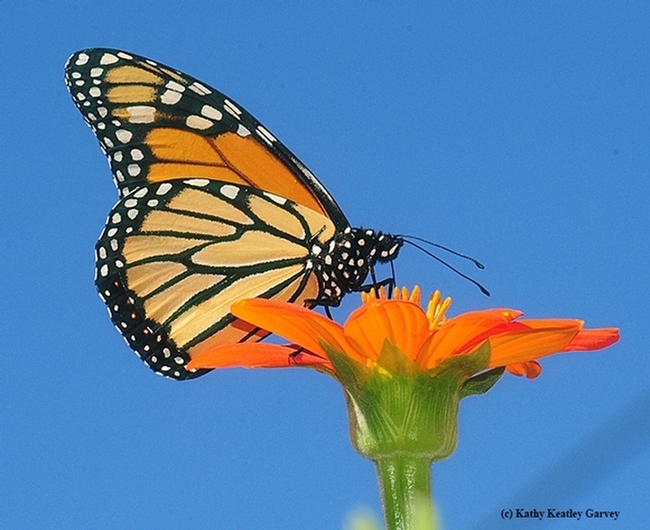
A monarch butterfly, Danaus plexippus, nectaring on a Mexican sunflower, Tithonia rotundifola. (Photo by Kathy Keatley Garvey)
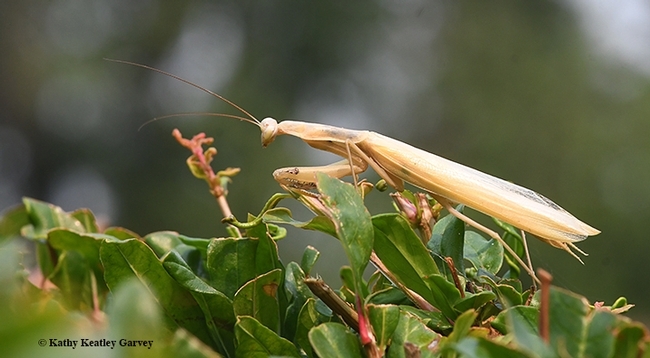
A praying mantis, Mantis religiosa, looking for prey. (Photo by Kathy Keatley Garvey)
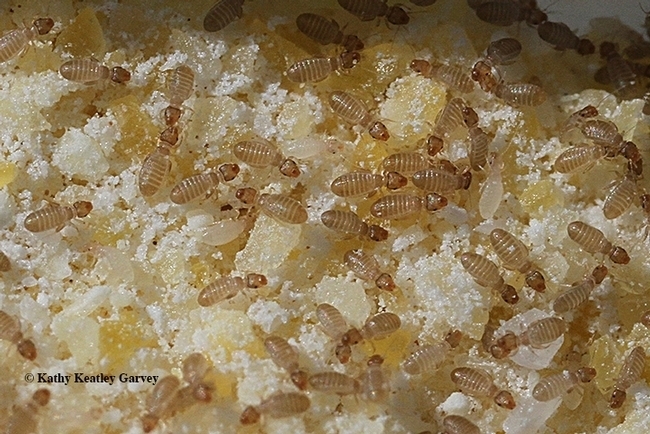
Booklice, Liposcelis bostrychophila, are nearly microscopic (about a millimeter long). You may find them in your cornmeal. (Photo by Kathy Keatley Garvey)
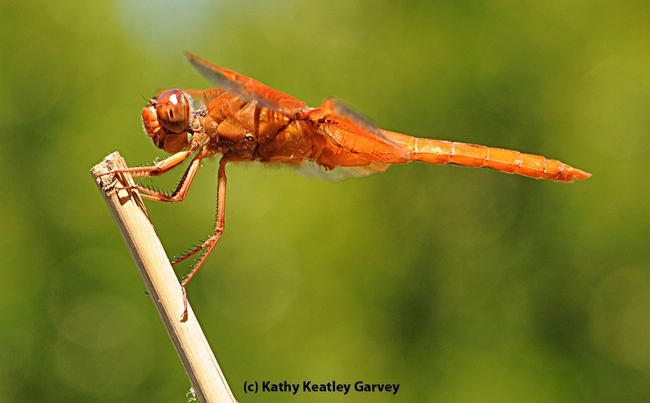
A flameskimmer dragonfly, Libellula saturata, perches on a stake. (Photo by Kathy Keatley Garvey)
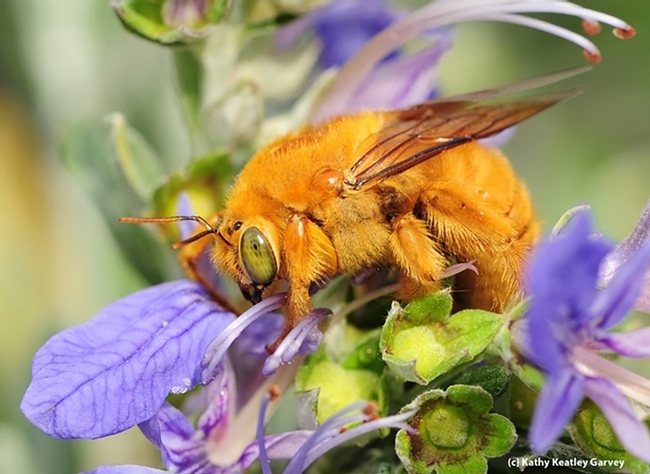
This is the male Valley carpenter bee, Xylocopa sonorina (formerly known as Xylocopa varipuncta). (Photo by Kathy Keatley Garvey)